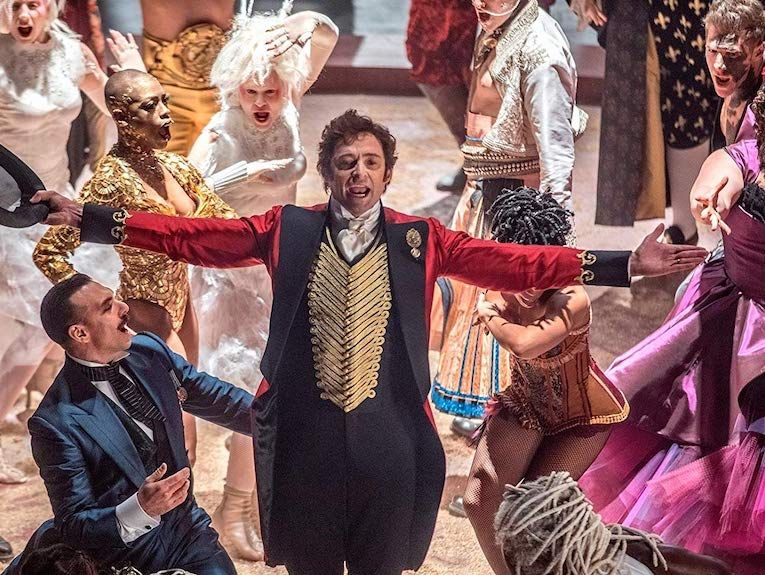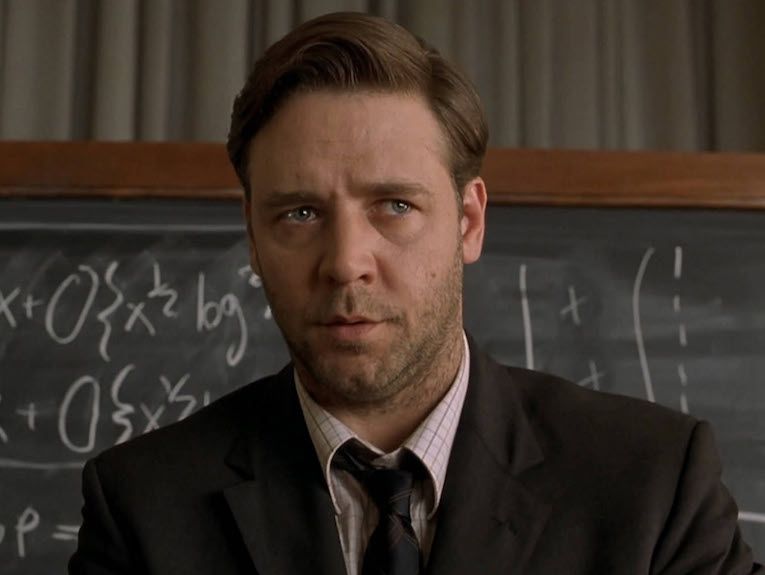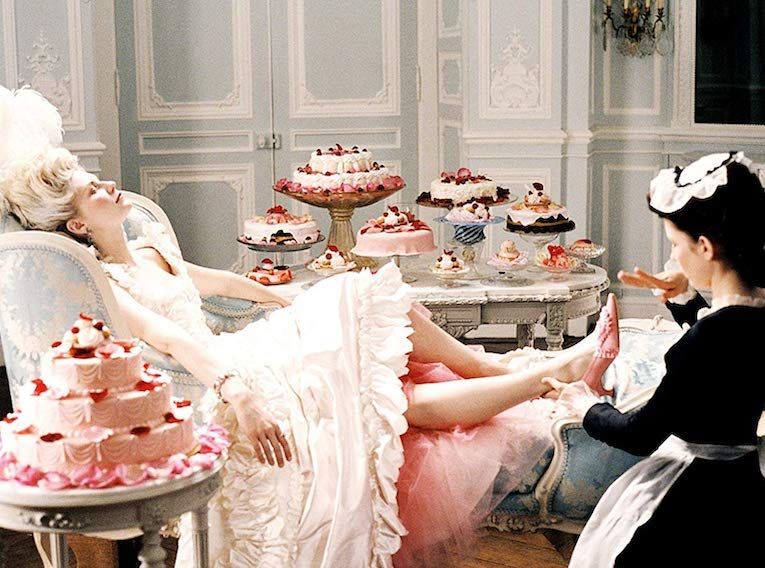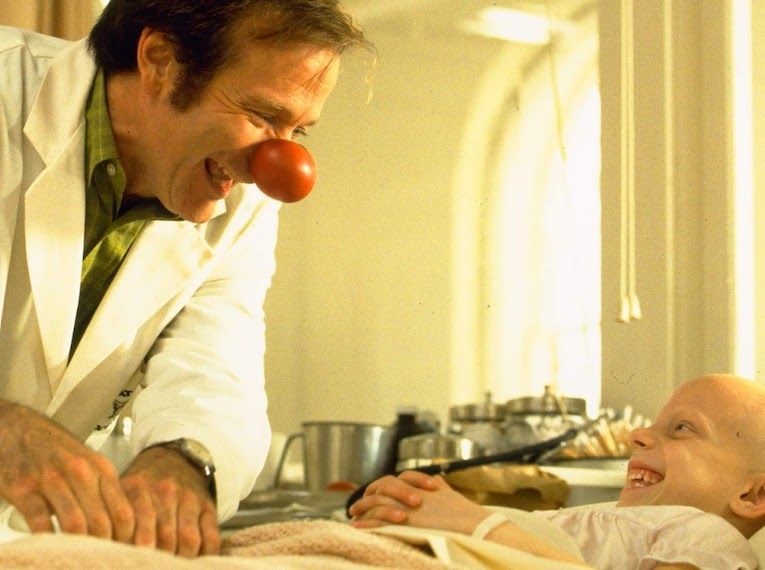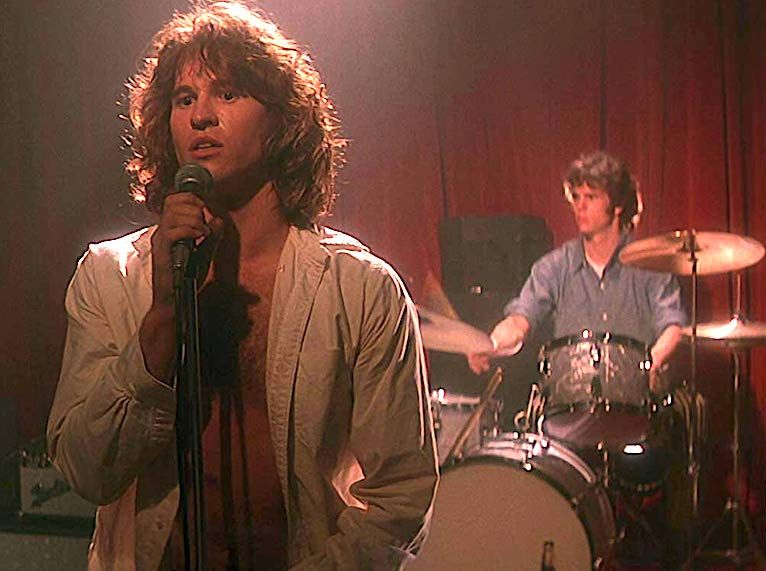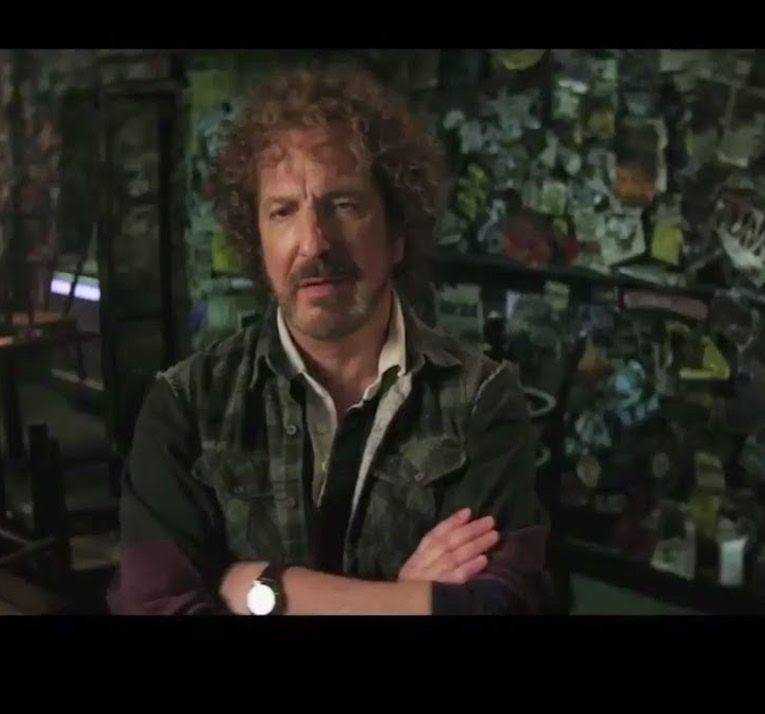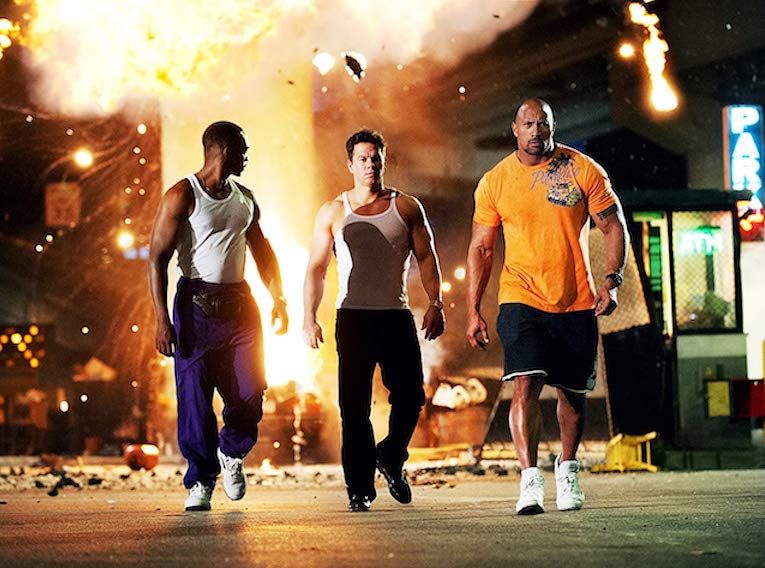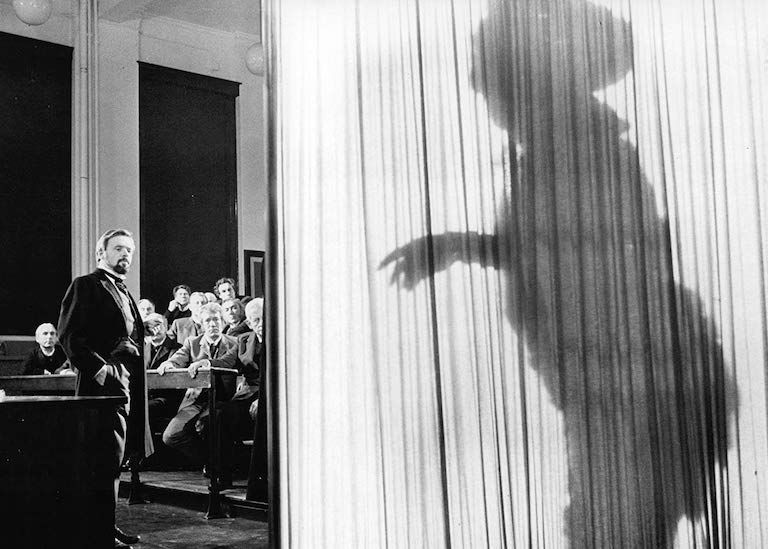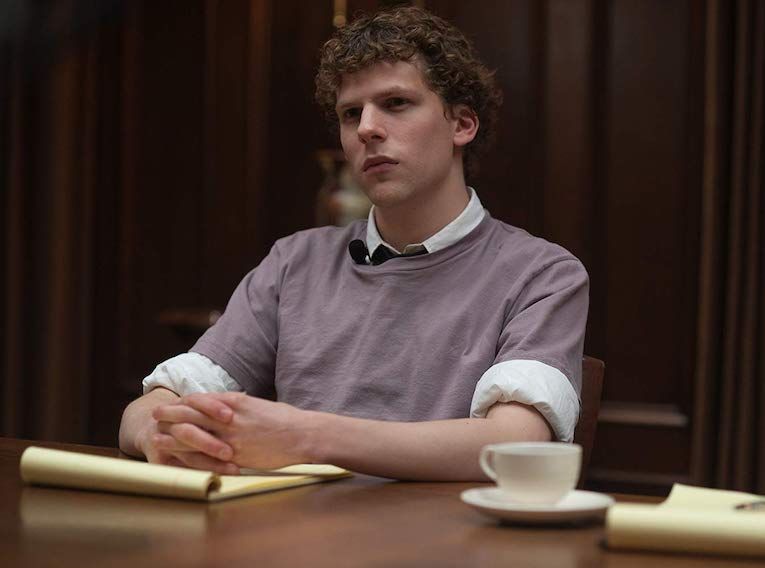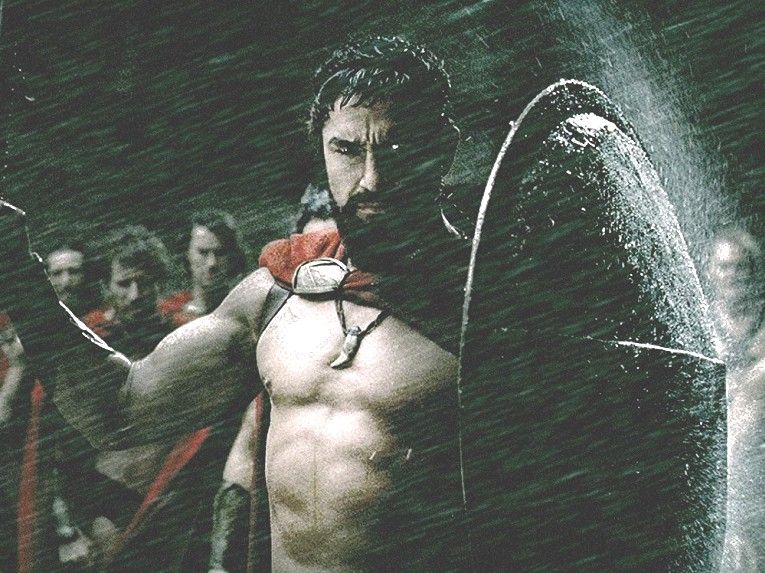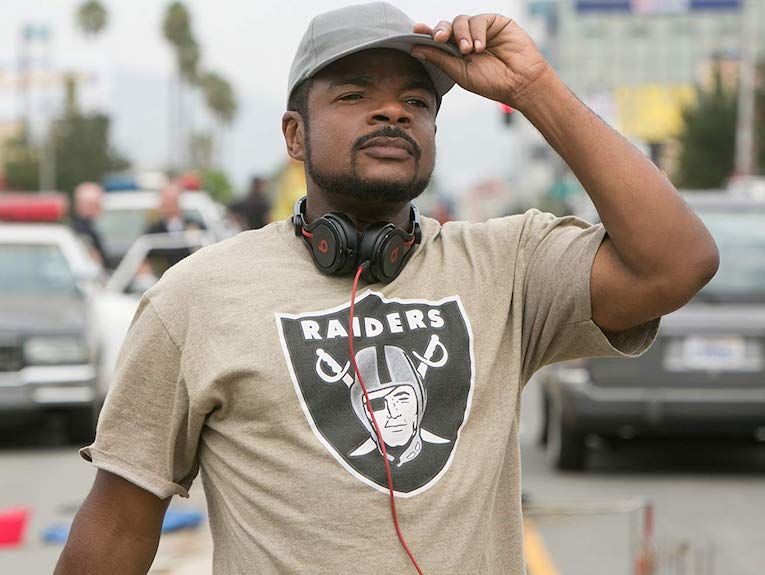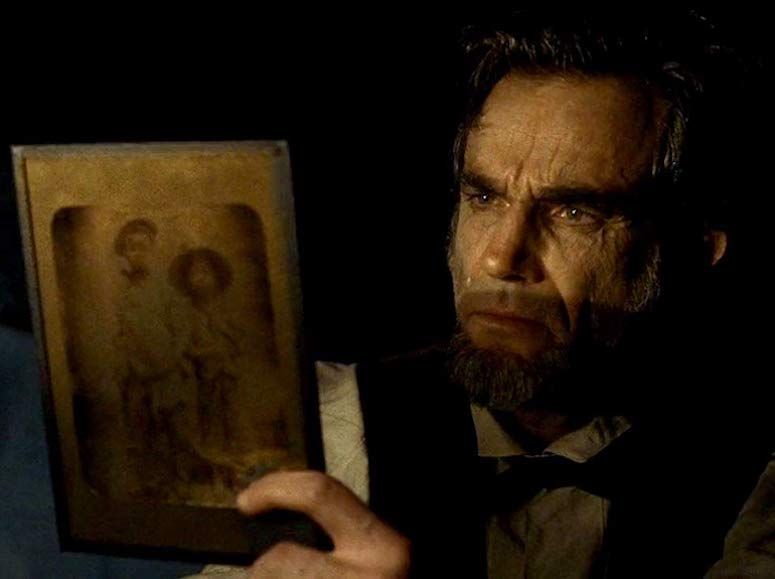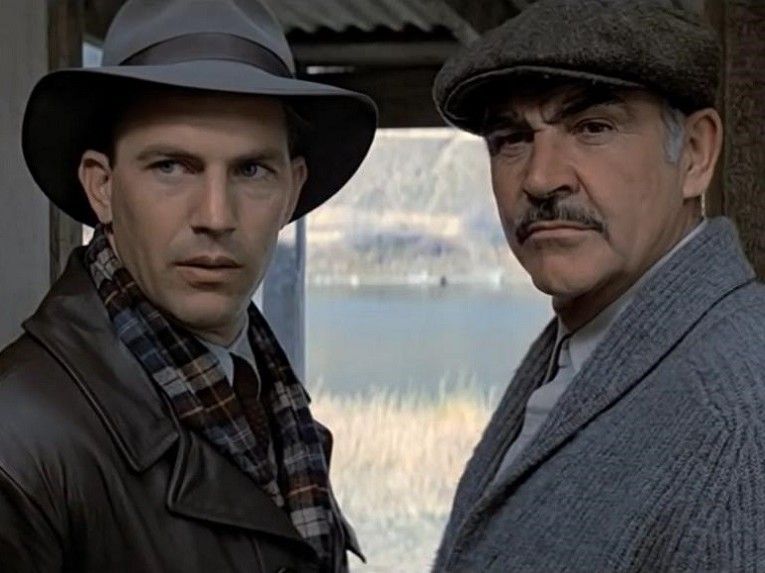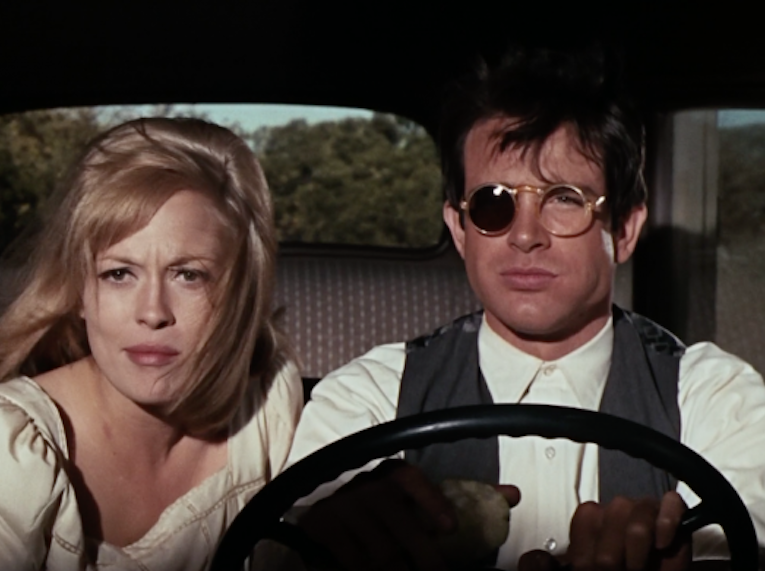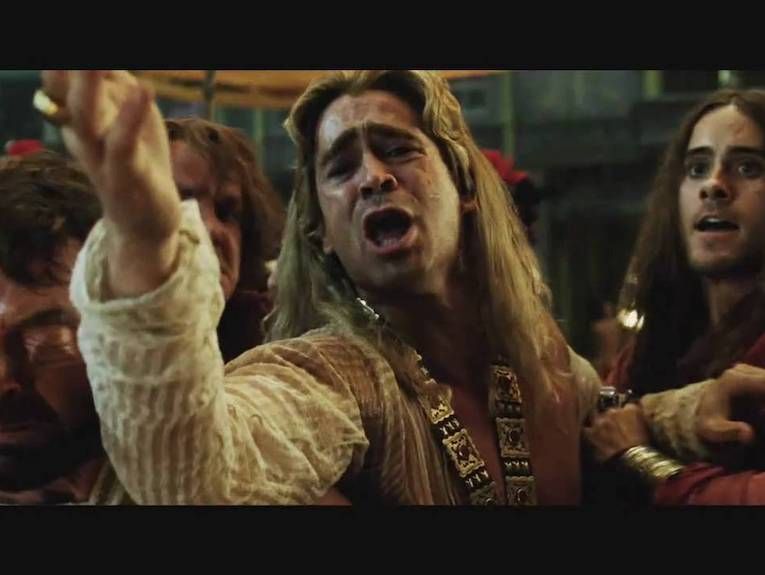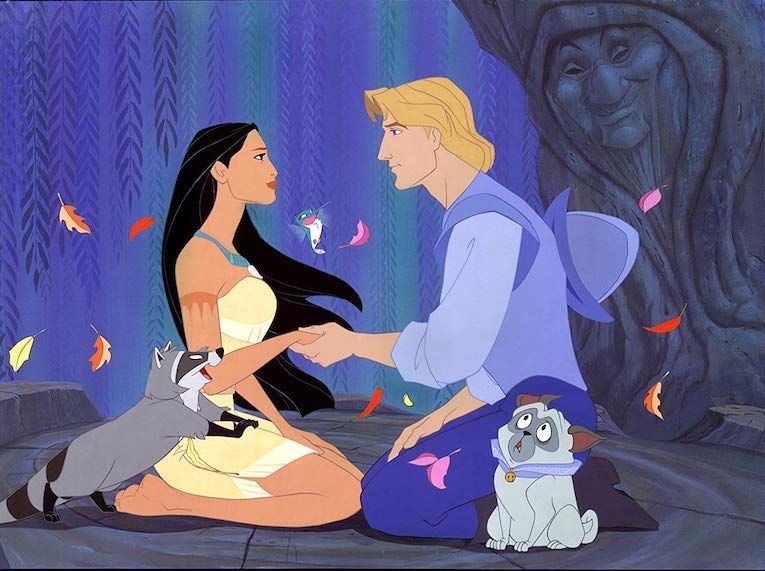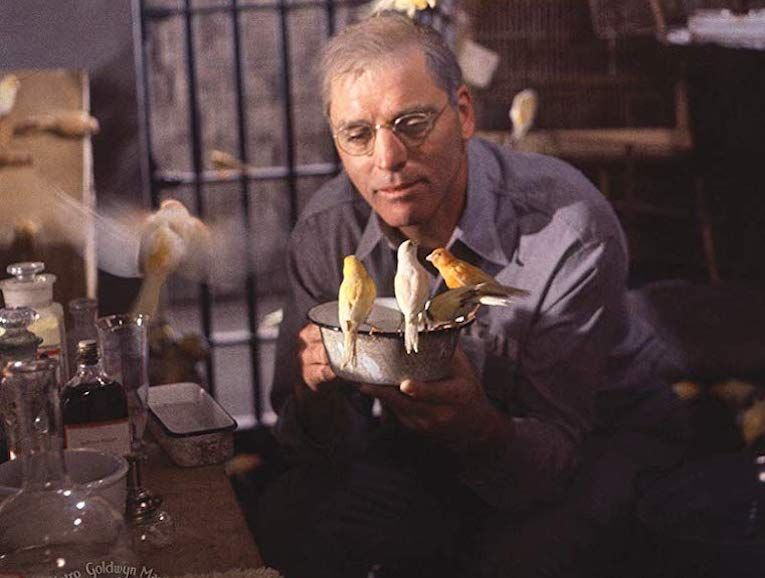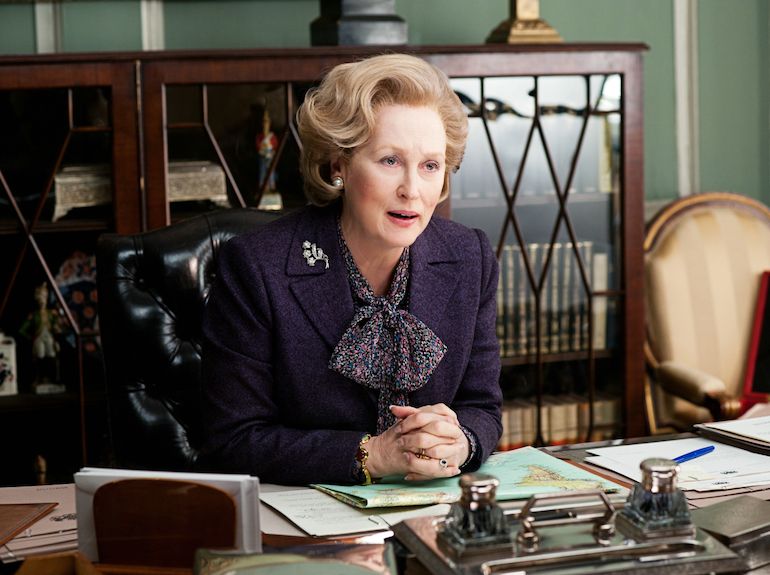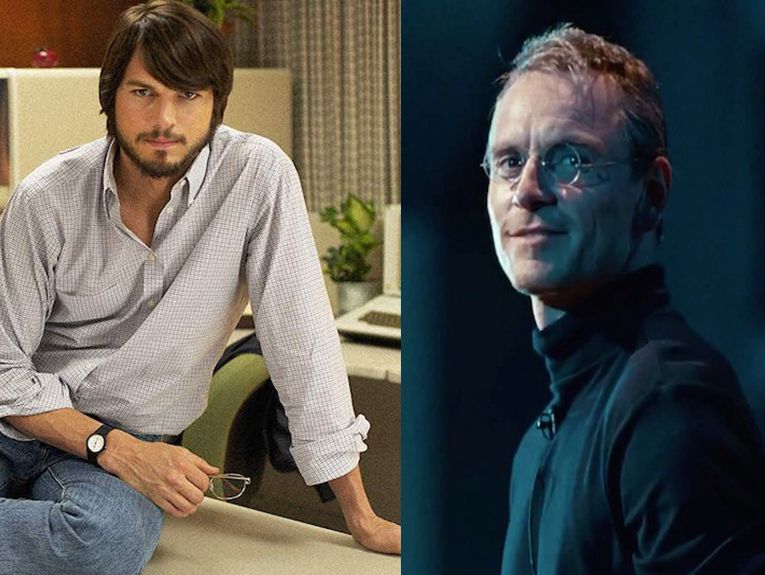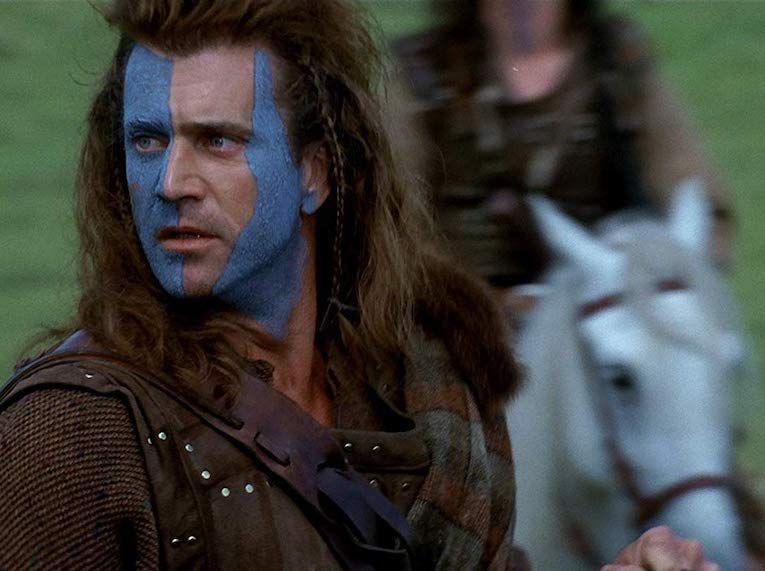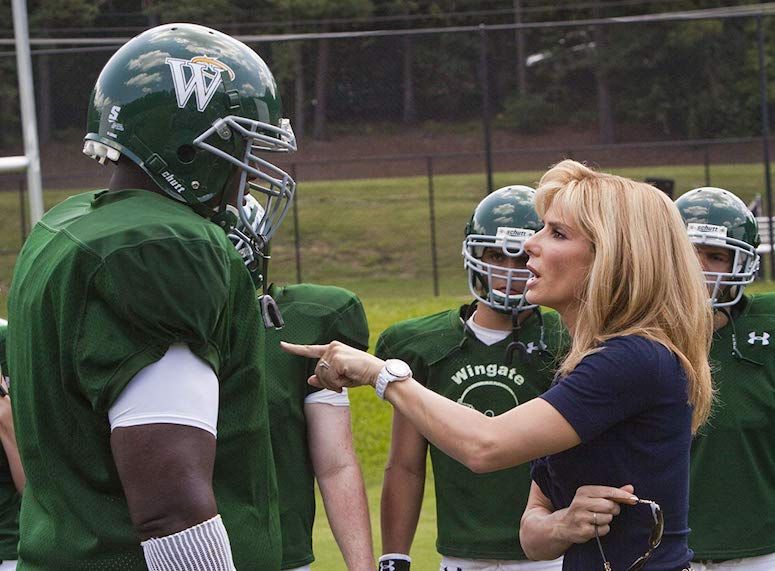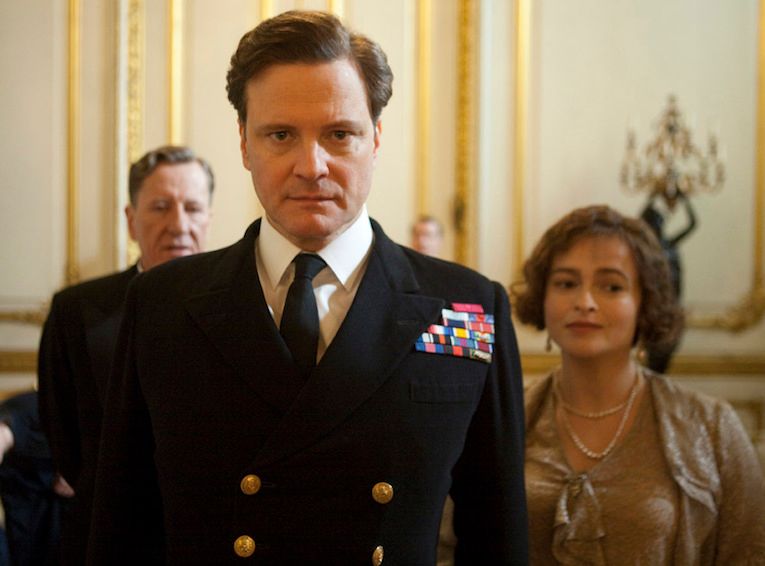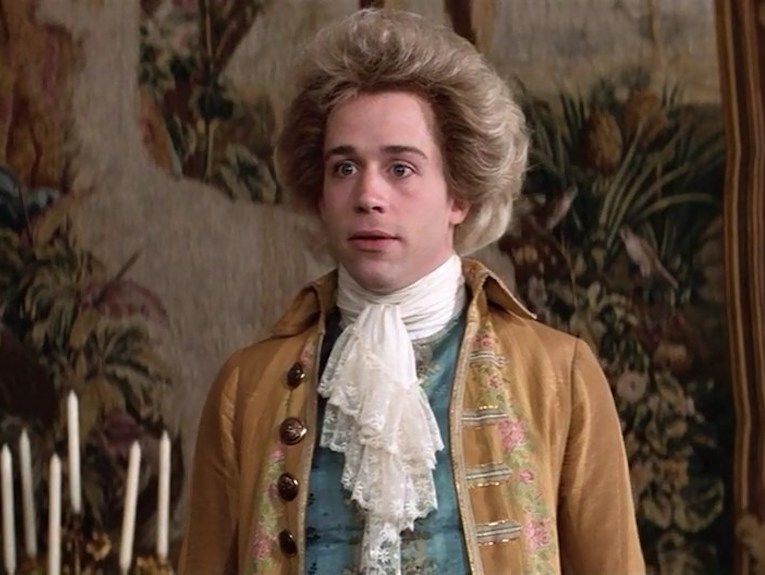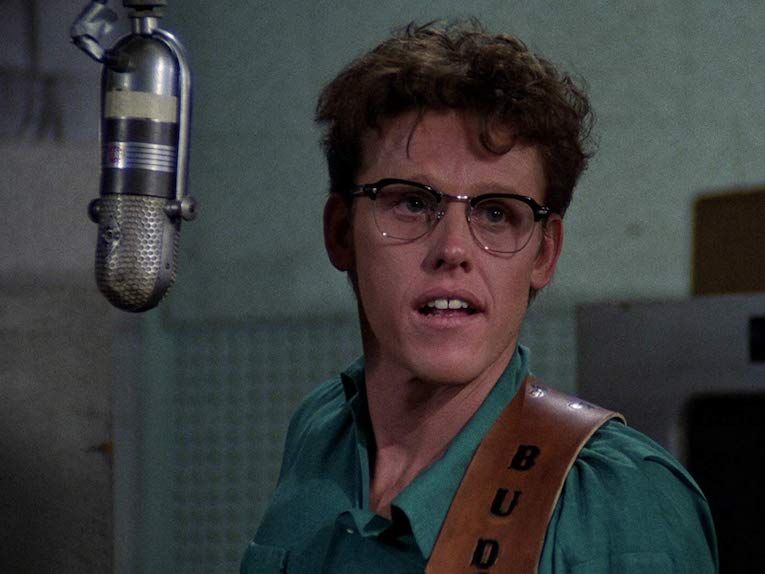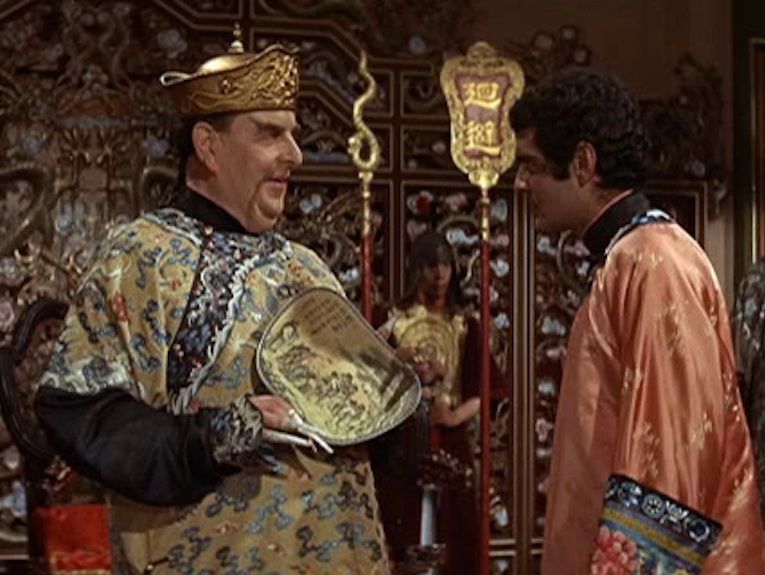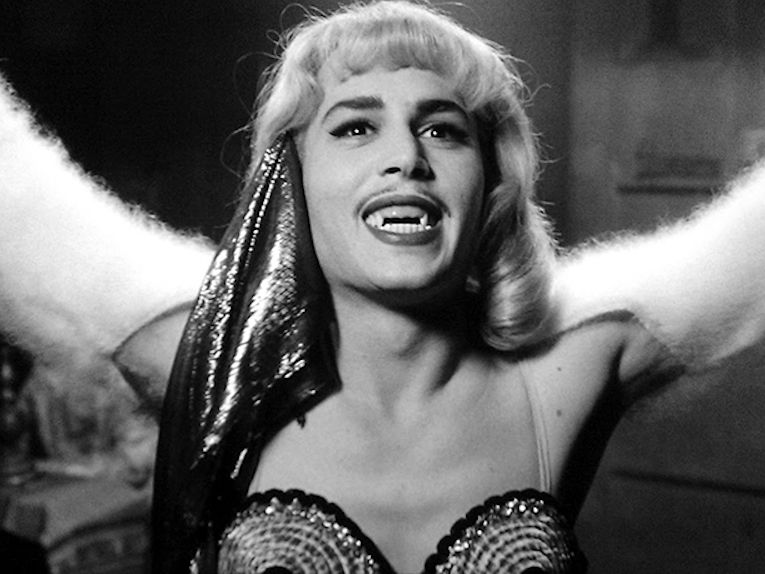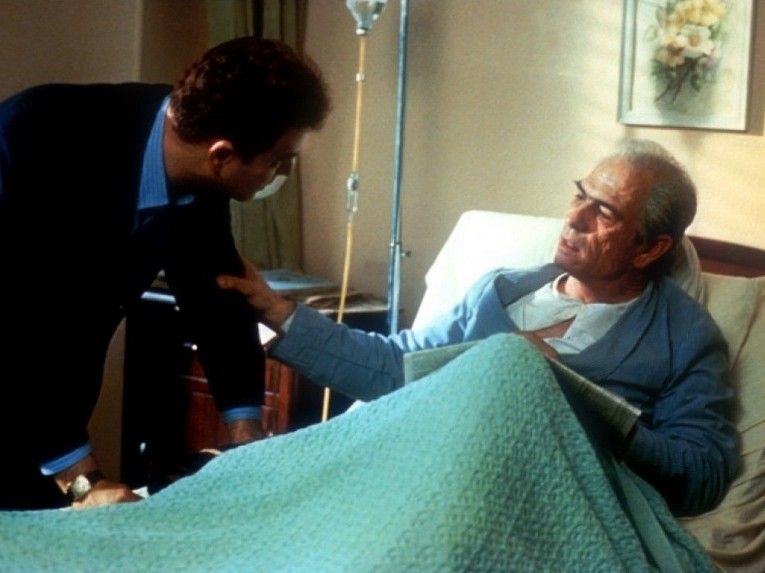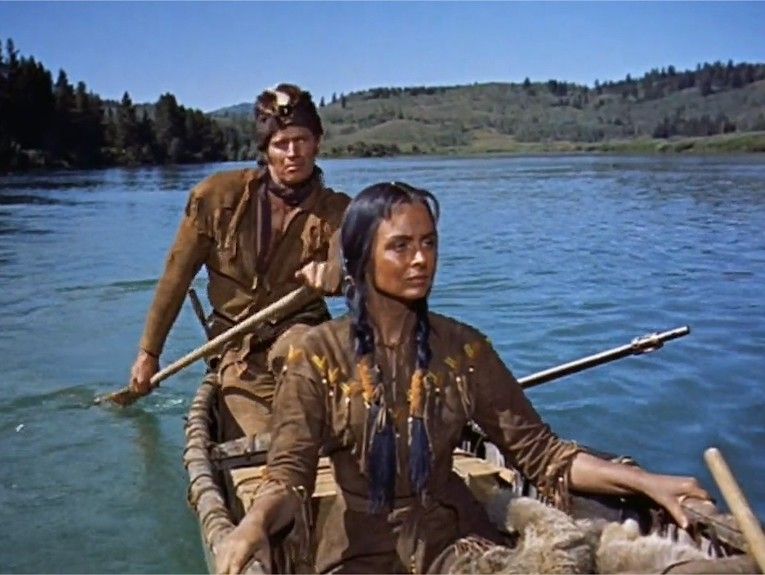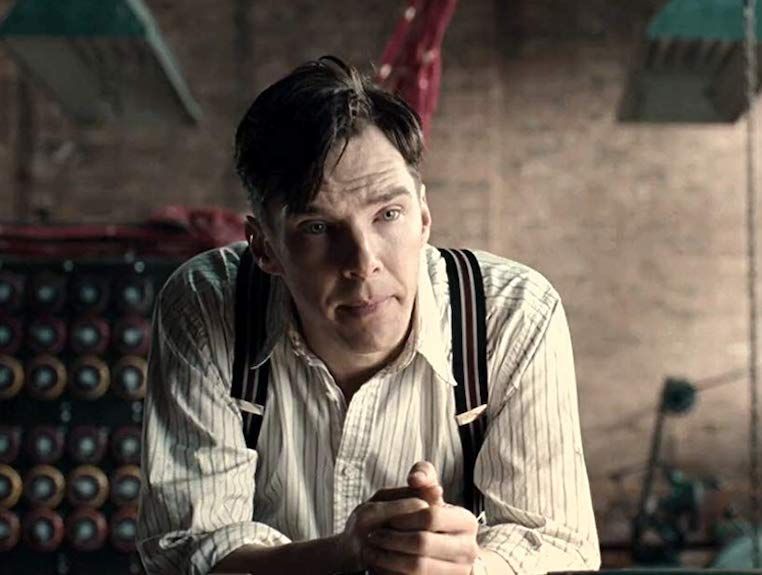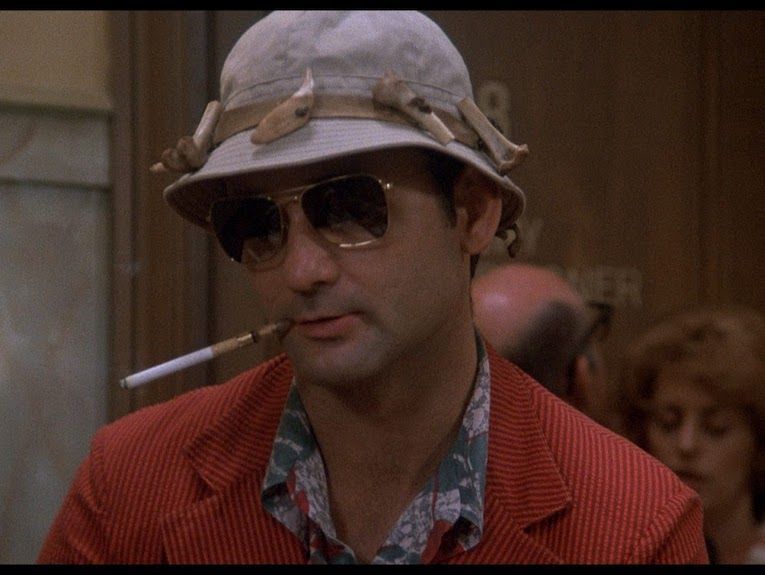When a movie is "based on a true story," it won't be 100% accurate... People don't get married a day after meeting. Record labels don't sign bands after hearing them once.
But there’s a difference between making a narrative digestible and straight lying. These popular biopics ever made have either exaggerated details for dramatics or completely made things up.
A Beautiful Mind
Schizophrenia and mental illnesses are a tough thing to show visually in a film. For this reason, the mental state of the real John Nash was embellished into visual hallucinations (something he never experienced). While inaccurate, this is at least understandable in terms of getting the premise across and giving us some sweet imaginary Ed Harris screentime.
What’s less understandable, however, is the glorified romance between Nash and his wife Alicia Larde, who he once threw to the ground at a mathematics department picnic, placing a foot on her neck. In other words: the film took Nash’s mental illness and made it way more protagonist-friendly, effectively snuffing out any moral ambiguity in the process.
Marie Antoinette
Much like the previous, Marie Antoinette’s biggest inaccuracies are intentional style choices rather than goofs. The modern music and colors come to mind but, as The Guardian points out, the film largely ignores the political context and focuses simply on the royal life. The result is both well made and somewhat forgettable.
Overall it’s surprisingly close to the real-life woman, with the exception of her courtship with Louis-Auguste, which was surprisingly more difficult than what the movie shows us. Not only did they not share the same bedroom, but took seven years for any sparks to fly (as opposed to the few months seen in the film).
Patch Adams
When you get a legend like Robin Williams to portray you in a biopic, chances are he’s still going to be more like himself than the real-life person he’s representing. This was not only the case for Patch Adams but also the DJ in Good Morning Vietnam.
In terms of the former, the real-life doctor has taken much issue with the film—as it’s coverage of his own extensive humanitarian work was given a superficial makeover into a feelgood comedy. In Adams' own words: “it made my children cry.” And not in a good way.
The Doors
Oliver Stone has never been one for choosing historical accuracy over capturing the overall mood of an era or event. Or as Doors drummer John Densmore put it, Stone makes “a beautiful impressionistic painting of the times”. This was in regard to The Doors, a film that takes more than a few liberties.
While Densmore enjoyed the film, keyboardist Ray Manzarek (who originally wanted to direct the film himself) was way less forgiving. He accused Stone of focusing on and fabricating a darker version of Jim Morrison than what really existed. Specifically, despite what happens in the film, the singer never threw violent fits or dropped out of school.
CBGB
Society has done CBGB a whole lot of wrong. Not only has the once iconic club closed down (and subsequently turned into an airport restaurant), but the only biographical story of its conception is both boring and far off. Someone could (and has) list all the ways the film is bogus.
For starters, it completely omits any iconic people of color from the story, as many diverse bands like Bad Brains and The Dead Kennedys are AWOL from the film despite their importance to the club's history. Owner Hilly Kristal himself is oddly made out to be in over his head, despite his true-life success. And what’s worse, the film’s entire portrayal of the punk rock genre borders on cringingly cartoonish.
Pain & Gain
One of the biggest mysteries of our era will be why and how any film studio allowed Michael Bay to make a comedy about the true story of two criminals torturing a man for a month before trying to murder him. Pain & Gain is, at best, an inaccurate and cruel film. For starters, the real life double murder depicted in the film as being sort of a slapstick accident was actually entirely premeditated.
The character Paul Doyle (Dwayne Johnson) is actually a composite of three different Sun Gym gang members. Mark Wahlberg's character Daniel Lugo was of Puerto Rican descent in real life, and never befriended their intended victim Victor Kershaw (Tony Shalhoub). Overall this might be the most depressing interpretation of true events, down to the “fun” use of “Gangsters Paradise” over the end credit reveal that some of these people died in prison.
The Elephant Man
As The Guardian notes, The Elephant Man is an extremely faithful adaptation of the memoirs of Frederick Treves. The only problem is that the memoir itself is less than accurate, to the point that it even gets the historical subject Joseph Merrick’s name wrong (in the movie he’s referred to as “John”)
Additionally, nearly all of Merrick’s agency is taken away. The film portrays him as a slave to a series of carnival showmen, when the reality is that he was often a business partner, making a full substantial living from his work. And when you think about it, taking away the business savvy of the character in order to make him a victim is pretty damn insulting.
The Social Network
As we’ve learned through painful experience, there are a lot of reasons to dislike Mark Zuckerberg. However, one of those reasons is not that he started Facebook to win back an ex-girlfriend, mainly because he was already dating his future wife when The Social Network takes place. It’s a lie, albeit a very well-told one.
In fact, according to most accounts, Zuckerberg and his associates have been nothing but nice guys in terms of outward demeanor (their actions toward things like personal privacy and political propaganda is a whole other subject). It makes sense that, according to Zuck himself, the only thing the movie got right was his wardrobe.
300
The real story of Battle of Thermopylae, or really any battle fought with pointy objects, is no doubt dramatic enough that a filmmaker doesn’t have to invent “battle rhinos” in order to make it interesting. It probably goes without saying that this film is blatantly wrong on so many different levels concerning so many different characters.
There was no pierced giant villain, no deformed betrayer, no glorious protection of democracy (the Spartans were essentially fighting for their right to continue keeping slaves). And the actual size of the Greek forces at the Battle of Thermopylae were closer to 5,000 or 6,000, not 300. But what makes this so extra weird is that director Zack Snyder has boasted that this movie is “90 percent accurate” and that historians loved it. The reality is that 300 is just as, if not less than, historically accurate as Batman v Superman.
Straight Outta Compton
While the film is filled with so much suspicious serendipity, from Ice Cube casually writing Friday to Snoop and Dre coming up with "Nuthin' But a G Thang" as a total improv, probably the biggest bend is its glaring omission of incidents of violence against women by Dr. Dre - specifically, his assault on journalist Dee Barnes.
Hollywood is well aware of the pitfalls in making biopics about people who are still alive, especially famous and powerful people, is going to be shot through a rose-colored lens. And in fairness to the filmmakers, it’s not like every biopic ignores blatant acts of violence, sexism, racism, and homophobia… something the industry might want to address.
Lincoln
Consider the director, it’s probably no surprise to hear that a bunch of little things are made more dramatic in the film Lincoln. For example, the opening scene in which two soldiers have memorized the Gettysburg Address is simply not something that would have happened, as the speech wasn’t famous until years later.
The bigger problem is in the form of omission. Specifically, leaving out the part where Abraham Lincoln was just as racist as anyone else at the time, having even expressed his beliefs in white supremacy during a debate. The truth is that while the president played a part, actual civil rights would take years of dedication from people who weren’t rich white men with neat hats.
The Untouchables
When your true crime story ends with the arrest of a man for tax evasion, things tend to get a bit embellished. And by “embellished” we mean that The Untouchables added a whole lot of Elliot Ness shootout scenes that never happened, including that rooftop chase at the end.
Ness wasn’t even involved with the federal tax investigation, his raids serving more like a diversion than a means to an end. But even those raids weren’t nearly as exciting as what we see in the movie, nor was the raider Ness anything close to the boy scout played by Kevin Costner.
Bonnie And Clyde
One of the more fascinating things we don’t know about the real Bonnie and Clyde is whether or not they were even lovers. It’s assumed they were, but we have no way of knowing. Adding that romantic layer was the start of an idyllic misconception about their entire spree, with the classic 1967 film being a big example of this.
Along with glossing over all the murders, this movie gives us a Robin Hood-esque version of the duo, showing them limit their robberies to only big corporate banks. Turns out this is literally the opposite of the truth, as the pair’s primary focus was actually small-town grocery stores and gas stations.
Alexander
Capturing the life of Alexander the Great sure seems like something best reserved for a miniseries, as even this epically-lengthed film struggled to fit everything in. As a result, historians were pretty sore with how much Oliver Stone left out of the final cut. And what’s worse: the stuff they did include wasn’t exactly accurate.
Probably the most upsetting is how the Persian army was portrayed as a disorganized and dirty bunch that was easily defeated when the reality was exactly the opposite of that. It didn’t help that they cast Rosario Dawson to play his Iranian wife, something one historian compared to “having Lucy Liu portraying Queen Victoria of Britain.”
Pocahontas
We probably don’t have to actually go through, in detail, the many ways in which Disney’s Pocahontas is historically inaccurate. Pointing it out with any level of smugness is comparable to snidely declaring a magic trick to be fake. It’s a stupid obvious observation that even dumb babies know. Like, the dumbest babies.
This is indisputably why Pocohantas is number one on this list… for the idea that Disney could sugarcoat one of the biggest historical travesties with a love story between a Native American woman and a handsome invader almost seems like a spoof. When the aliens arrive to judge our culture, we seriously better hide this one.
Birdman Of Alcatraz
For what is considered an AFI list-worthy classic about a bird-loving prisoner who stops a violent riot, Birdman of Alcatraz is hilariously far off the mark. In fact, former convicts of the prison have referred to the film as “an excellent comedy” for the way it toned down the brutality of the titular Robert Stroud.
Along with being described by others as a “vicious killer”, Stroud was diagnosed as a psychopath and, due to his habit of keeping birds, was imprisoned in absolute filth. Along with being just lousy with birds, he used his equipment to secretly brew alcohol, making his “unfortunate” transfer to Alcatraz a little more understandable.
The Iron Lady
Setting aside several historical continuity errors, the most overt inaccuracies in The Iron Lady is how Margaret Thatcher is given the singular responsibility over her political actions and put center stage to events she wasn’t present for, such as when one of her advisers was assassinated in a car bombing.
This isn’t the opinion of a few historians either, but that of people who actually knew her, as well as the biographer who wrote the book the movie was based on. According to him, the film mostly removed the contributions of key figures under Thatcher, making her out to be much more of a lone visionary than just another politician.
The Two Steve Jobs Movies
Remember when Hollywood was competing to see who could score the most Apple products by assembling multiple Steve Jobs biopics? First was Jobs, the Ashton Kutcher vehicle that was about as accurate as a Drunk History episode. (And less well-acted.) And while Aaron Sorkin and Danny Boyle's Steve Jobs, which, while being a much stronger film, doesn't helm any closer to reality.
Steve Wozniak himself has spoken out about a few scenes in Jobs that take the balance away from him, in order to further mythologize Jobs as a magical genius by minimizing Wozniak's contributions in the creation of Apple. And as for Steve Jobs, the movie is absolutely littered with dramatic fabrications, mostly relating to Jobs' personality. Virtually every one of his former co-workers, including Wozniak, criticized the film for exaggerating Jobs' cruelty and ruthlessness, insisting he was a kinder person in real life.
Braveheart
The cinematic tale of William Wallace is as historically accurate as it is brief. It’s actually impressive how much they felt they needed to change in order to make this story appealing to audiences, starting with the simple fact that Wallace’s nickname wasn’t “Braveheart.”
Oh also, those kilts and face paint? About 300 years off. And along with costumes, pretty much the entire timeline and characters are wrong, from the age of Isabella of France to her relationship with Wallace to the fact that he wasn’t a commoner raised by his uncle. The entire movie is an exciting lie.
The Blind Side
While it’s true that the real-life Leigh Anne Tuohy took in and eventually adopted Michael Oher, the entire part in The Blind Side where she encourages him to take up football is a total fabrication. In reality, Big Mike was already being scouted long before the Tuohys entered his life.
But in the interest of award season, Oher’s personal accomplishments and ambitions were entirely credited to a rich family… something that would irk the athlete in later interviews. He stated that the version seen in the movie wasn’t him at all. But hey… Sandra Bullock got an Oscar for her white savior role so it was all worth it!
The King's Speech
The feel-good tale of a future king learning to overcome his speech impediment wouldn’t be very riveting if said protagonist didn’t actually have that bad of a stutter. Alas, this is the case with the real King George VI, who (pre-therapy) could absolutely deliver an uninterrupted speech if he focused hard enough.
There are plenty of other little inaccuracies, such as the way both the Duke and Duchess are portrayed as pampered dummies or how Edward VIII is shown as a bully. But the fact that this film’s dramatic crux is completely false sort of overshadows the rest. It’s like if James Cameron had a pterodactyl sink the Titanic instead of an iceberg.
Amadeus
This 1984 biopic about a rivalry between Mozart and Antonio Salieri is so damn inaccurate that it’s 100% wrong before the opening credits, showing a scene where Salieri cuts his own throat in a fit of madness (something that never happened). It doesn’t get better from there, unfortunately.
In fact, most everything about this character is wrong, from his “old bachelor” portrayal (in real life he was married with eight children) to his bitter rivalry with the titular character (they were friends when Mozart died). It turns out history can be very dramatic if you just make it all up.
The Buddy Holly Story
When this Gary Busey film first came out in 1978 there was an almost immediate backlash from the friends, family, and bandmates of Buddy Holly. Lawsuits were immediate, and even the real “Peggy Sue” called it “gobbledygook fantasy”. The problems are expansive and weird, including the strange addition of an orchestra on Holly’s final tour.
Even the filmmakers don’t dispute this, defending their work with “dramatic license”. While that is technically a fair defense, the amount in which they omitted certain people while making others seem terrible rightfully resulted in more than a few ticked off associates. And that’s a pretty good sign your biopic is off the mark.
The Conqueror
It should probably be immediately obvious why a movie that cast John Wayne as Genghis Khan might not be completely on the level. But just for starters, both the costumes and the dialogue were wrong, and it appears that no one working on the film had much regard for getting it right.
Along with the fully obvious problem of virtually the entire cast wearing brownface, the film also misrepresents the protagonist’s relationship with Bortai, who is abducted by Khan in the film but in real life was betrothed to him in an arranged marriage. There’s likely much more wrong with this film… but honestly, we could just stop at the part where The Duke plays a Mongolian emperor.
Ed Wood
Probably the most surprising thing about Ed Wood is just how close it ekes into this list. A substantial amount of the film is fairly accurate, including how the titular director got his funding through undergoing a baptism (although in real life it wasn’t his entire cast and crew).
What was changed is the scale of sadness in which certain characters were portrayed. Wood, for example, was a longtime alcoholic (something only mentioned in the film) while Bela Lugosi wasn’t as washed up or forgotten as his fictional self. When checking into rehab, Lugosi even received expensive gifts from an admiring fan: Frank Sinatra.
Cobb
If you haven’t seen it, the film Cobb is centered around the tale of sportswriter Al Stump meeting with the famed ballplayer to write his biography, only to be thrust into a world of alcoholism, racism, and murder. Ty Cobb is portrayed as an absolute madman who has completely alienated his friends and family.
Only here’s the thing: the story is based on a book by the real-life writer Al Stump, a weird grifter 100% brimming with hogwash. According to extensive historical research, Cobb never killed a man (a heck of a detail to invent), nor was he the violent racist seen in the film. And so the only thing this biopic got right was that he sorta looked like Tommy Lee Jones in his later years.
The Far Horizons
Even for the 1950s, it’s pretty shocking to see an actress like Donna Reed wearing brownface in order to play the Native American guide Sacagawea. This movie about Lewis and Clark not only does that terrible thing, but infuses a love story between Reed’s portrayal and William Clark, played by Charlton Heston.
This is insulting for a few reasons, the biggest being that the real story is that Sacagawea came along because she was the wife of their guide Toussaint Charbonneau (who is turned into a villain in the film)... only to prove herself extremely useful for non-romantic reasons. Now that’s a story worth telling.
The Imitation Game
While it’s understandable to sensationalize a few minor moments of someone’s life in order to achieve a more digestible drama, The Imitation Game presents itself as a grounded take while wildly accusing Alan Turing of treason. Specifically, that a Soviet spy blackmails him by threatening to expose his sexuality.
According to Turing’s biographer (and author of the book this movie was based on), the very idea that these two people were working on the same team, let alone engaging in blackmail, is “ludicrous”. Also, it’s extremely insulting to a man who underwent enough scrutiny while he was still alive.
The Greatest Showman
It’s fitting to mystify a man like P.T. Barnum much in the way he would have wanted. Sure, he never publicly cheated on his wife with the singer Jenny Lind, but nor did he condone an interracial love affair between his (fictitious) benefactor and protegee, Phillip Carlyle (Zac Efron) and a black trapeze artist (Zendaya).
In fact, Barnum was huckster racist who once bought an African American woman and pulled her teeth out so she could look older... before holding a public autopsy when she later died. The film completely whitewashes how much of a monster Barnum actually was.
Go ahead and take a single look at the history, at the exploitative and privileged businessman now reimagined as a younger and charming Hugh Jackman, and see how good you feel about this film. The biggest shame is that an honest look at Barnum (and not a joyous musical) would actually make a fascinating film.
Where The Buffalo Roam
Properly depicting the life and work of Hunter S. Thompson is a task that only a director like Terry Gilliam was equipped for. Case in point: the lesser-known 1980 biopic Where The Buffalo Roam, starring Bill Murray as the Gonzo himself, and Peter Boyle as Carl Lazlo.
While even Thompson agreed on Murray’s excellence, he also described the film as “just a horrible movie, a cartoon," and it’s not hard to agree with him. The film is less of a biographic representation as it is a caricature roughly based on various moments from Hunter’s work. The end result is extremely forgettable.

